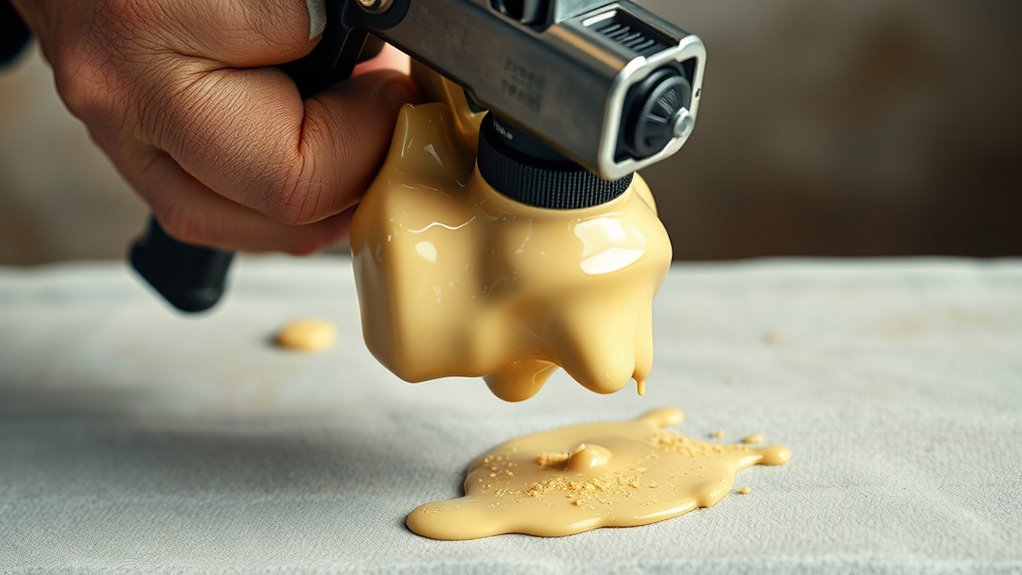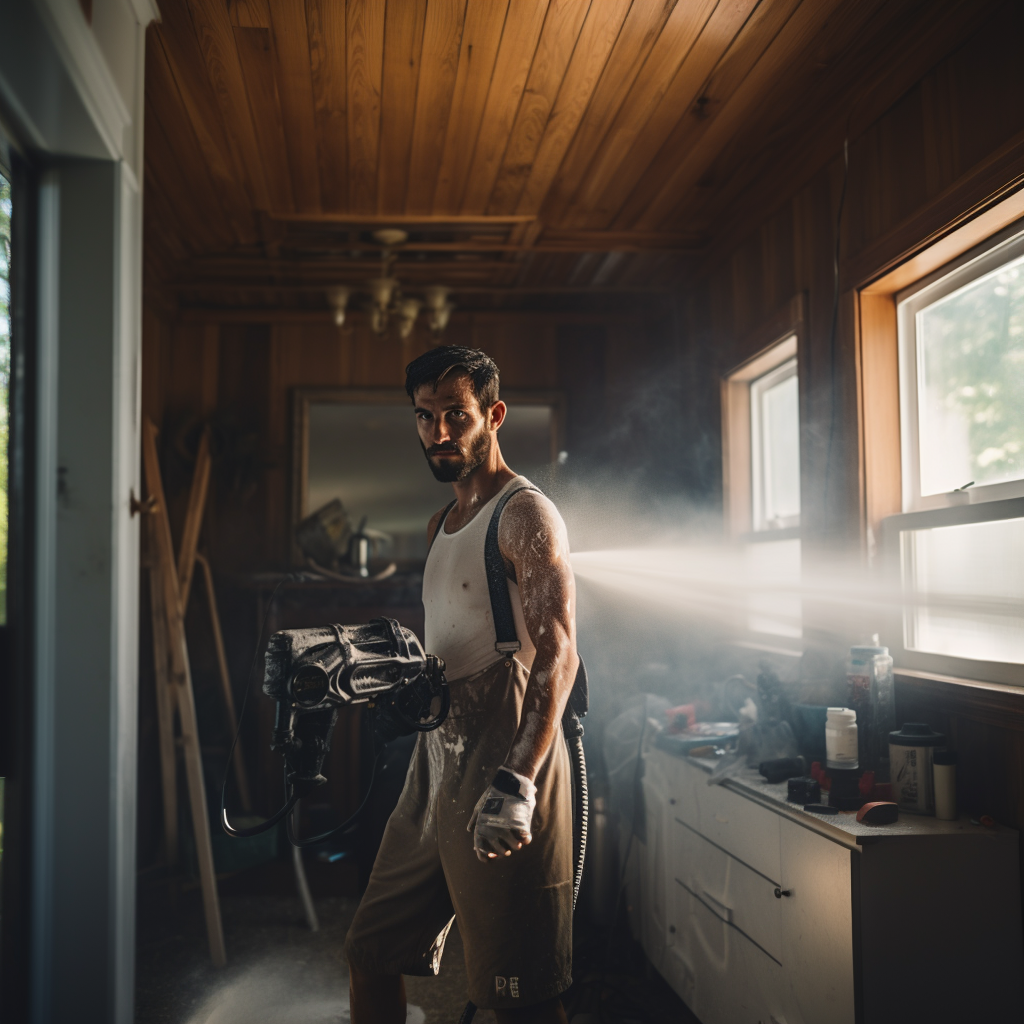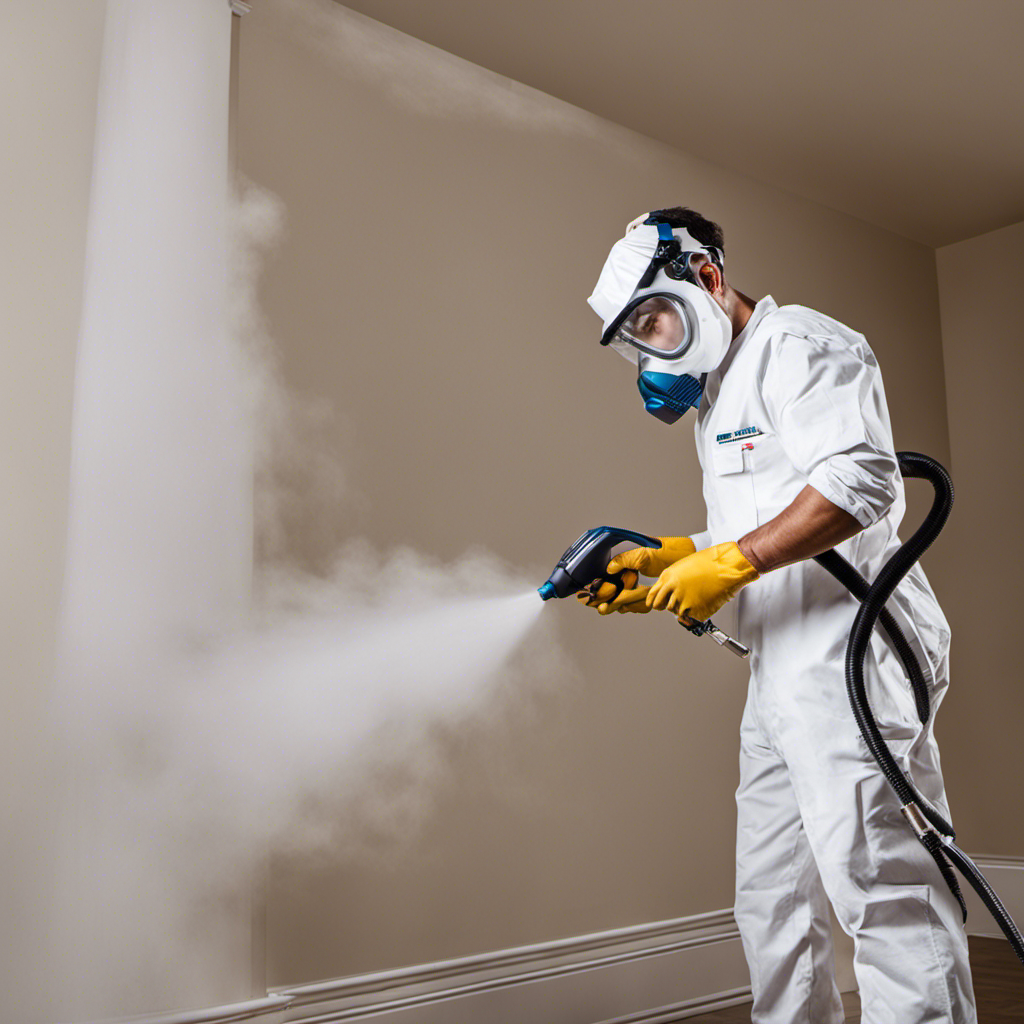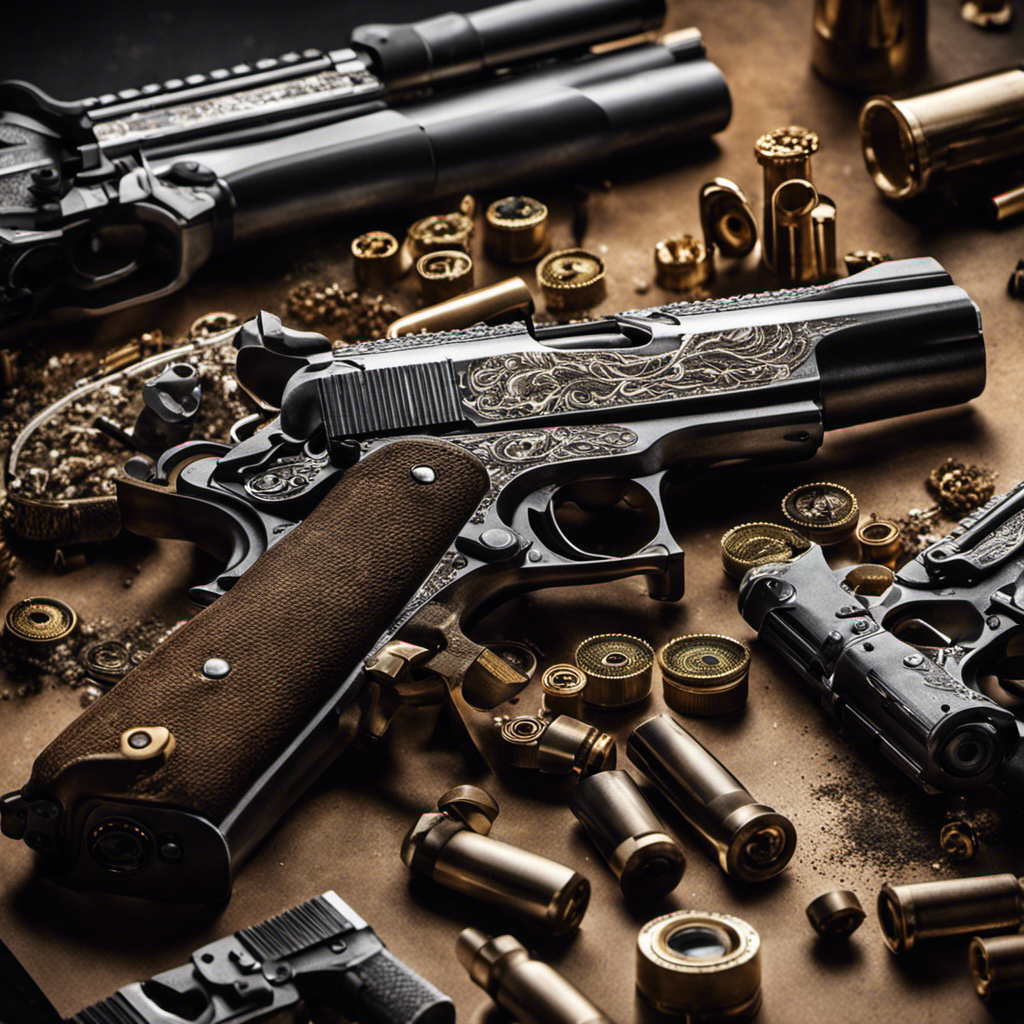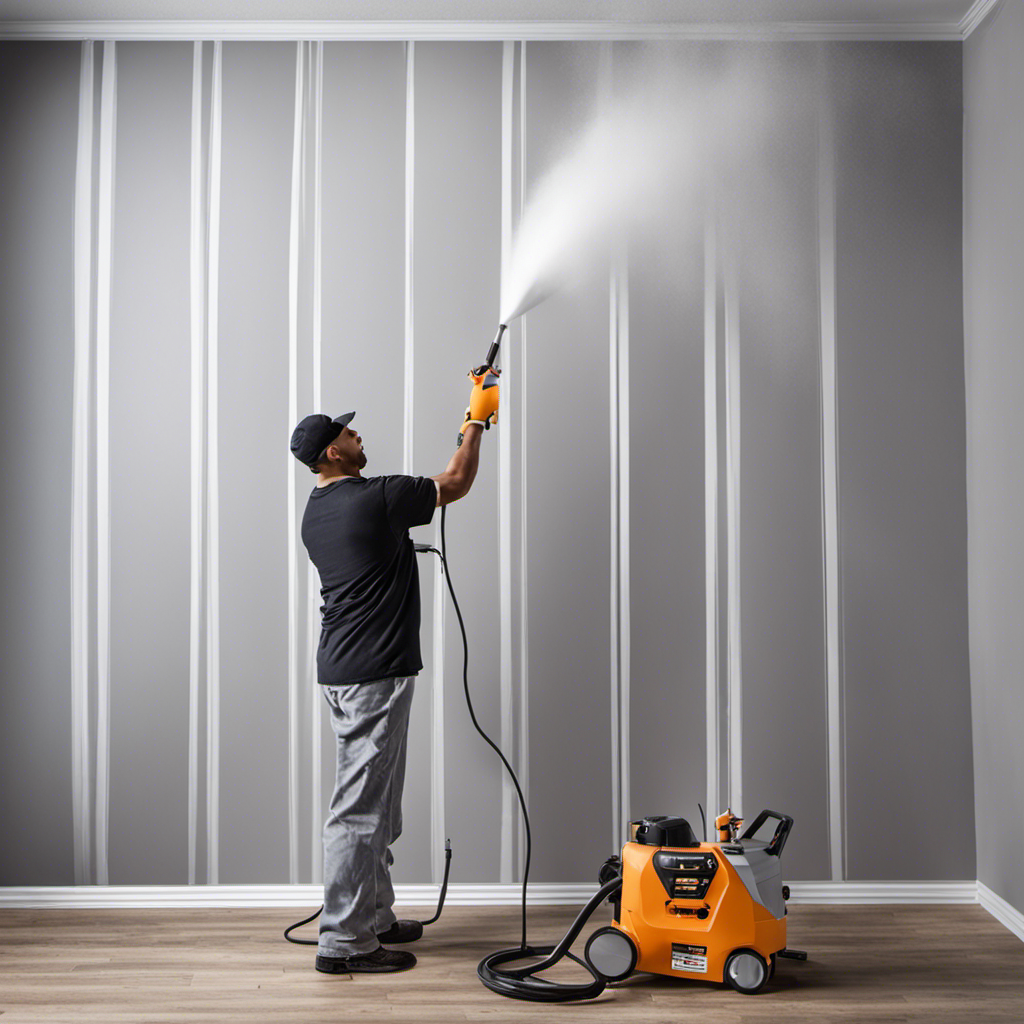When your sprayer struggles with thick paint, start by thinning it with the manufacturer-recommended solvent, adding small amounts gradually until it flows smoothly. Keep your equipment clean by thoroughly flushing nozzles, filters, and passages after each use to prevent clogs. Adjust spray pressure and gun settings for thicker material, and test on a scrap surface first. Taking these steps can help achieve a professional finish—continue with this guide to learn more effective solutions.
Key Takeaways
- Thin the paint with the appropriate solvent according to manufacturer guidelines to improve flow and prevent clogging.
- Regularly clean and maintain the sprayer, especially the nozzle and filter, to ensure smooth operation.
- Test spray on a scrap surface and adjust pressure and spray settings before applying to the main surface.
- Gradually add thinner and stir thoroughly to achieve desired viscosity without compromising paint quality.
- Consider increasing spray pressure cautiously to handle thicker paint, ensuring even coverage and preventing overspray.
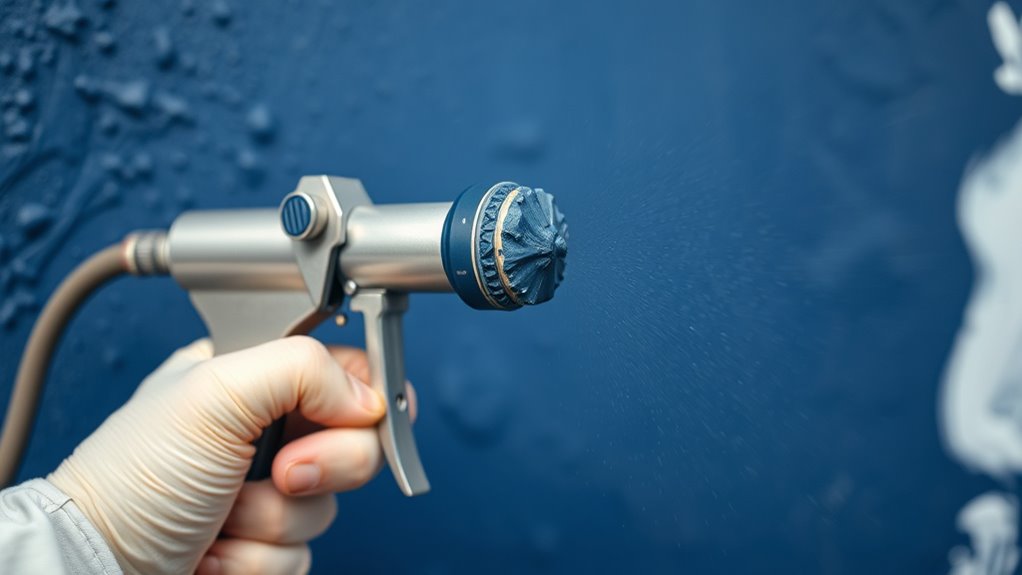
Spraying thick paint can be challenging because it often clogs the spray tip or results in uneven coverage. When your sprayer struggles with viscosity, it’s usually because the paint is too thick to flow smoothly through the nozzle. To fix this, you need to contemplate paint thinning, which involves adding the right amount of solvent to reduce the paint’s viscosity. Proper paint thinning makes the paint easier to pump and spray evenly, preventing clogs and ensuring a professional-looking finish. Before you start, check the manufacturer’s recommendations for thinning ratios—using too much solvent can compromise adhesion and durability, while too little won’t solve the viscosity issue.
Thick paint can clog sprayers; thinning with the right solvent ensures smooth, even application.
In addition to thinning the paint, sprayer maintenance plays a critical role in overcoming spraying problems. Regularly cleaning your sprayer after each use prevents paint buildup that can clog the tip or cause inconsistent spray patterns. Pay close attention to the nozzle, filter, and fluid passages, ensuring they are free of dried paint or debris. If you notice a reduced spray pattern or splattering, it’s likely time for a thorough cleaning. Use the appropriate cleaning solutions recommended by the manufacturer, and take care to disassemble and inspect parts regularly. Well-maintained equipment is less likely to struggle with viscosity issues because it’s functioning at peak performance.
When it comes to managing thick paint, don’t forget to test your spray pattern on a scrap surface first. This allows you to make adjustments—like further thinning or changing the spray pressure—before tackling your main project. Adjust the spray gun’s pressure settings to accommodate the thinner paint, ensuring a consistent flow. Keep in mind that a higher pressure can help push thicker paint through the nozzle, but too much pressure might cause overspray or uneven application. Striking the right balance is key; it often takes some trial and error to get it just right. Additionally, understanding the viscosity of your paint can help you determine the best thinning ratio for optimal sprayability. If you’re still having trouble, revisit your paint thinning process. Sometimes, adding a small amount of a suitable thinner or solvent incrementally can markedly improve sprayability. Always stir the paint thoroughly after thinning to ensure uniform consistency. Remember, maintaining your sprayer isn’t a one-time task; regular sprayer maintenance reduces downtime and keeps your equipment working efficiently. With proper thinning techniques and diligent maintenance, you’ll be able to spray even thick paint smoothly, achieving a professional finish without headaches.
Frequently Asked Questions
Can I Thin Thick Paint Without Compromising Its Finish?
You can thin thick paint without compromising its finish by adjusting the paint consistency carefully. Use proper thinning techniques, like gradually adding a compatible thinner or solvent, and mix thoroughly. Test spray on a small area first to ensure the finish stays smooth and even. This way, you maintain the paint’s quality while improving sprayability, avoiding clogs or uneven application. Always follow manufacturer recommendations for thinning ratios to protect your desired finish.
What Types of Spray Tips Are Best for Thick Paints?
When choosing spray tips for thick paints, focus on spray tip selection that handles higher coating viscosity. Use larger or wider spray tips, such as 0.017 to 0.021 inches, to accommodate the thicker material. These tips help guarantee smooth flow and even coverage. Always match the spray tip to your paint’s viscosity for ideal results, avoiding clogging or uneven spraying that can compromise your finish.
How Often Should I Clean My Sprayer When Using Viscous Coatings?
They say “a stitch in time saves nine,” and the same applies to sprayer maintenance. When working with viscous coatings, you should clean your sprayer after every few hours of use or when switching colors. Follow a proper cleaning schedule, including flushing with solvent and cleaning filters, to prevent clogs. Regular maintenance tips like inspecting seals and replacing worn parts will keep your sprayer working smoothly and extend its lifespan.
Are There Specific Brands of Sprayers Better for Thick Paints?
When choosing a sprayer for thick paints, you should consider sprayer brand comparisons to find models designed for high viscosity materials. Look for brands known for managing viscosity effectively, like Graco or Titan. These sprayers often feature powerful motors and specialized tips. Additionally, employing viscosity handling techniques, such as thinning paint or adjusting pressure, helps guarantee smooth operation and prevents clogs, making your projects easier and more efficient.
Is It Safe to Heat Paint to Make It Easier to Spray?
You might wonder if heating paint is safe to improve sprayability. While increasing paint temperature can reduce viscosity, it’s essential to follow safety precautions. Always use a controlled method, like a paint heater designed for this purpose, and avoid overheating, which can cause fumes or fire hazards. Keep the paint in a well-ventilated area, wear protective gear, and never heat paint over an open flame.
Conclusion
Now that you know the common causes behind thick paint struggles, you might think you’ve got it all figured out. But sometimes, the solution isn’t as simple as it seems. Will adjusting your pressure or thinning the paint do the trick? Or is there a hidden issue lurking beneath the surface? Don’t give up just yet—your perfect finish could be just one tweak away, waiting to be uncovered. Are you ready to conquer those stubborn paints?
Franz came aboard the Paint Sprayer Zone team with a background in both journalism and home renovation. His articulate writing style, combined with a passion for DIY projects, makes him an invaluable asset. Franz has a knack for breaking down technical jargon into easy-to-understand content, ensuring that even the most novice of readers can grasp the complexities of paint sprayers.
